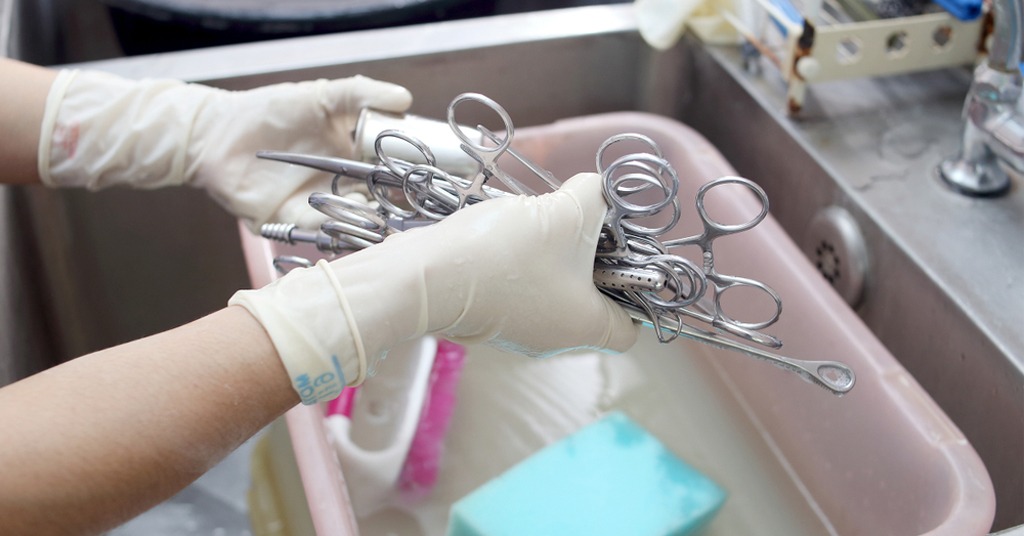Introduction
Sterilization is the cornerstone of surgical safety, eliminating pathogens to prevent infections and ensure patient well-being. Sterilizing surgical instruments is the cornerstone of surgical safety, eliminating pathogens to prevent infections and ensure patient well-being. Improper sterilization can lead to serious complications, making it critical for hospitals, clinics, and veterinary practices to follow best practices. At Surgment, our FDA, CE, and ISO-compliant surgical instruments are designed for compatibility with standard sterilization protocols, ensuring durability and performance. This comprehensive guide (~1800 words) outlines safe and effective sterilization methods, step-by-step processes, common mistakes to avoid, and emerging trends, empowering healthcare professionals to maintain a sterile surgical environment in 2025.
Why Sterilization Matters
Surgical site infections (SSIs) account for 20% of healthcare-associated infections, according to a 2024 Infection Control study, with improper sterilization contributing significantly. Effective sterilization eliminates bacteria, viruses, and spores, protecting patients and maintaining regulatory compliance. For example, a contaminated scalpel can introduce pathogens, leading to prolonged recovery or legal issues. Surgment’s instruments are engineered to withstand rigorous sterilization, ensuring safety and reliability across specialties like orthopedics, dentistry, and veterinary surgery.
Sterilization Methods for Surgical Instruments
Several methods are used to sterilize surgical instruments, each suited to specific tools and settings:
- Steam Autoclaving: The most common method, using high-pressure steam at 134°C for 3–5 minutes or 121°C for 15 minutes. Ideal for stainless steel tools like scissors or forceps.
- Chemical Sterilization: Uses solutions like glutaraldehyde or peracetic acid for heat-sensitive instruments (e.g., plastic-handled mirrors). Requires longer exposure times (10–20 minutes).
- Dry Heat: Employs high temperatures (160–180°C) for 1–2 hours, suitable for moisture-sensitive tools but less common due to longer cycles.
- Plasma Sterilization: Uses low-temperature hydrogen peroxide gas plasma, ideal for delicate instruments like endoscopes, with cycles of 30–60 minutes.
- Ethylene Oxide (ETO): A low-temperature gas method for complex instruments, requiring aeration to remove residues. Used in specialized settings due to toxicity concerns.
Step-by-Step Sterilization Process
- Pre-Cleaning: Rinse instruments immediately after use to remove blood, tissue, or fluids. Use a neutral-pH enzymatic cleaner to break down residues.
- Ultrasonic Cleaning: Place instruments in an ultrasonic bath for 5–10 minutes to remove stubborn debris. Ensure tools are separated to avoid scratching.
- Rinsing and Drying: Rinse with distilled water to remove cleaner residues, then dry with lint-free cloths to prevent corrosion.
- Packaging: Place instruments in sterilization pouches or cassettes, labeling with dates and contents. Use autoclave-compatible materials.
- Sterilization: Select the appropriate method (e.g., autoclaving, chemical). Use validated equipment and follow manufacturer guidelines for temperature and time.
- Storage: Store in sterile, sealed pouches or trays in a dry, controlled environment. Use silica gel packs to manage moisture.
- Monitoring: Use chemical or biological indicators to verify sterilization efficacy, ensuring compliance with infection control standards.
Common Mistakes to Avoid
- Skipping Pre-Cleaning: Allowing residues to harden complicates sterilization and risks contamination.
- Overheating: Exceeding recommended autoclave temperatures can dull blades or weaken materials.
- Improper Packaging: Using non-compatible pouches can compromise sterility or damage instruments.
- Inadequate Monitoring: Failing to use indicators risks incomplete sterilization, endangering patients.
- Following WHO infection prevention protocols helps healthcare facilities maintain safe and sterile environments.
Case Study: Reducing Infections with Proper Sterilization
In 2024, a mid-sized hospital in Ohio implemented a standardized sterilization protocol using Surgment’s autoclave-compatible surgical instruments. Previously, inconsistent cleaning and sterilization led to a 5% SSI rate. After adopting enzymatic pre-cleaning, ultrasonic cleaning, and validated autoclaving, the hospital reduced SSIs by 30%, saving $50,000 in treatment costs and improving patient outcomes. This case highlights the impact of rigorous sterilization on safety and efficiency.
Selecting Sterilization-Compatible Instruments
Choose instruments designed for your sterilization method:
- Material: Stainless steel or titanium withstands autoclaving and chemical sterilization. Surgment’s tools use premium materials for durability.
- Design: Smooth surfaces and minimal crevices simplify cleaning and sterilization.
- Certifications: FDA, CE, and ISO compliance ensures tools meet sterilization standards.
- Manufacturer Guidelines: Follow specific instructions for each instrument to avoid damage.
Industry Trends in Sterilization for 2025
- Automated Sterilizers: Digital autoclaves with real-time monitoring improve consistency and efficiency.
- Eco-Friendly Solutions: Biodegradable cleaning agents and recyclable pouches align with sustainability goals.
- Smart Systems: IoT-enabled sterilizers track cycles and alert staff to maintenance needs.
- Portable Units: Compact sterilizers suit small clinics or mobile practices.
Tips for Healthcare Facilities
- Train Staff: Conduct regular training on sterilization protocols to ensure compliance.
- Document Processes: Keep records of sterilization cycles and indicator results for audits.
- Invest in Quality: Choose durable, sterilization-compatible tools like Surgment’s to reduce maintenance costs.
- Stay Updated: Follow Surgment’s blog for insights on sterilization advancements.
Frequently Asked Questions (FAQs)
- How often should I sterilize surgical instruments?
- Sterilize after each use to ensure safety and compliance.
- Can all instruments be autoclaved?
- Most stainless steel tools can, but check manufacturer guidelines for heat-sensitive instruments.
- What’s the best way to monitor sterilization?
- Use chemical and biological indicators to verify efficacy, following infection control standards.
- How do I store sterile instruments?
- Keep in sealed pouches or trays in a dry, controlled environment to maintain sterility.
Conclusion
Safe and effective sterilization is critical for surgical success, protecting patients and maintaining regulatory compliance. By following best practices and using sterilization-compatible instruments, healthcare facilities can minimize risks and enhance outcomes. Surgment’s FDA, CE, and ISO-compliant surgical instruments are built for durability and reliability, supporting modern sterilization protocols. Visit our website to explore our tools and ensure a sterile surgical environment in 2025. By following best practices for sterilizing surgical instruments, you can protect patients and meet modern compliance standards.
Share your sterilization tips or ask questions in the comments. Contact Surgment for personalized recommendations or browse our surgical instruments.








Add comment